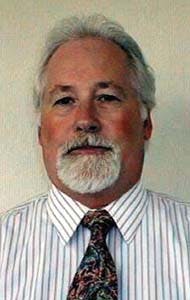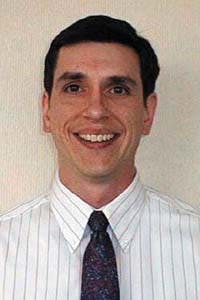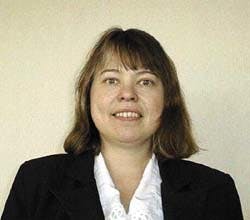LUBE OIL PROCESSING-2
Fred Banta, Peter O. Staffeld, Mary P. McGuiness, Robert G. WuestIn several lube-refinery applications, Mobil Oil Corp. has demonstrated process improvements in the areas of vacuum distillation, solvent refining, lube hydrocracking, and catalytic dewaxing.
Mobil Technology Co.
Paulsboro, N.J.
This article is the second of three that discusses Mobil's lube technologies. The first covered Mobil's compositional monitoring approach to predict lube-oil qualities. The third will discuss the company's catalyst technologies and commercial applications.
Deep-cut vacuum distillation
Deep-cut vacuum distillation (DCVD) aims to achieve maximum vacuum gas oil (VGO) yield and sharp-cut separation of gas oils. The principle behind DCVD is to achieve the lowest pressure and highest temperature possible for the vacuum flash zone while minimizing liquid-resid entrainment.Key features include proprietary fractionation equipment with a patented flash zone de-entrainment chimney (Fig. 1 [36,769 bytes]).
To date, Mobil has implemented DCVD at four lube refineries for improved lube-distillate yield and quality and at nine fuel refineries for cleaner preparation of cracking feedstock.
In a solvent-lube refinery, DCVD raised the resid cut point by 40° C. resulting in 2.5% higher VGO yield. Overlap between VGO cuts was also reduced by 30° C. With this technology, Mobil has produced marine engine oils and industrial-circulating and gear oils of high quality.
In a lube-hydrocracking refinery, DCVD debottlenecked the vacuum tower by 20%, which resulted in an improved HVGO yield and viscosity (10-15% increase in viscosity).
Solvent extraction
Although the initial furfural units were licensed and designed by Texaco Inc., Mobil has developed improvements to extraction columns, alternate solvents, and hybrid processing over the years.- Extraction columns. Furfural extraction is the key process for controlling the oxidative and thermal stability of a base oil. The primary process variables for controlling quality are solvent/oil ratio, temperature, and number of extraction stages.
In the 1980s, Mobil endeavored to secure a flexible supply of crudes which were suitable for base-oil manufacture. Although several Mexican and North Sea crudes showed potential for lubes, these crudes generally required more severe furfural extraction with correspondingly lower process yields. Many Midcontinent and Arab Gulf crudes showed promise. Mobil at different times ran all of the above crudes in its solvent units.
Mobil obtained good lube production rates from the lower quality lube crudes by redesigning extractor internals and changing the temperature profile in the extractor. Included in the internals' redesign are unique feed, furfural, and intercooler-return distributors to improve contacting efficiency. Most Mobil extraction units are running at 25-50% above design feed rates by incorporating these hardware changes.
Work continues on improving extraction unit hardware. Flooding and raffinate undercarry are problems which occur as extraction units are expanded to increase production. A 1.83 m (6 ft) cold-flow model is being used to study the hydrodynamics occurring at the bottom of the extractor.
- Alternate solvents. Some lube refineries use N-methyl-pyrrolidone (NMP) as the extraction solvent. Mobil is currently evaluating if improved yields from NMP justify revamping its furfural units.
Mobil has studied numerous solvents and solvent systems to improve its furfural extraction process. The most promising of these involves using a small amount (<10%) of a cosolvent with furfural. the cosolvent increases the solvent power of furfural and can be used in existing solvent recovery systems.
a commercial test of this solvent system demonstrated its ability to improve yield or production capacity. in this instance, a 1-2% yield was realized on a heavy neutral run.
- Hybrid processing. Hybrid processing can be an attractive debottlenecking investment for an existing solvent refinery.
Certain lubricants, used in critical applications, require base oils with high viscosity indices (105 VI) and very low-sulfur contents. Although solvent extraction can achieve this viscosity index (VI) with some crudes, raffinate yields are typically very low and sulfur removal is limited to about 80%.
An alternative processing route is to couple hydrotreating with extraction, commonly called hybrid processing. Mobil has been producing very high quality (VHQ) turbine oils via this hybrid route for more than 10 years.
Fig. 2 [30,760 bytes] illustrates the overall yield (extraction, hydrotreating, and dewaxing) advantage of hybrid processing as VI is increased from a base level. In the hybrid curve, hydrotreating severity is increased with raffinate VI.
While hydrotreating helps to preserve yield, there is some viscosity loss due to the chemical reactions which occur (Fig. 3 [30,323 bytes]).
Solvent dewaxing
The performance of solvent dewaxing units is strongly affected by solvent composition and utilization. Many units are limited by solvent recovery, and decisions have to be made for allocating solvent for dilution vs. washing.Hot-washing of filters is critical in maintaining optimum filtration rates. Proper hot-washing times and temperatures can increase production rates by 20% with minimal investment cost.
The solvent-recovery limitations mentioned above and high refrigeration costs are constant concerns to solvent-dewaxing operators.
Recently, Mobil and W. R. Grace jointly commercialized a membrane separation system (Fig. 4 [73,289 bytes]) to recover cold solvent from dewaxed-oil filtrate. The recovered solvent can be used directly for dilution, bypassing the solvent recovery system entirely.
Besides reducing refrigeration and solvent-recovery costs, this technology increases solvent inventory for dilution, which can increase dewaxed-oil production of filter-limited stocks.
The technology was first demonstrated in a 2,500 b/d commercial-scale plant at Mobil's Beaumont refinery. The demonstration program confirmed an economically viable solvent selectivity and good production rates during a 16-month, steady-state run.
A 72,000 b/d membrane unit was designed in-house and was built at the Beaumont refinery. The unit was started up in early 1998. The basic design objectives were to recover and recycle about 12,000 b/sd of solvent and to maintain less than 3% lube oil in the recovered solvent.
The commercial plant has maintained less than 1% lube oil in the recovered solvent and can recover solvent at 70% above the design rate. Base oil production at the dewaxing unit has increased by about 20%.
The capital cost of the membrane unit was about one-third of that which would have been required for a conventional expansion of the same magnitude.
Lube hydrocracking
Lube hydrocracking is an alternative to solvent refining.In solvent-lube processing, the main objective is to remove undesirable low VI components inherent in the crude via liquid/liquid extraction. The low VI components are typically rejected to low-value fuel oil.
Lube hydrocracking converts the undesirable components into valuable lube molecules with suitable VI. Some low-sulfur naphtha and distillate are made as byproducts, and these are generally higher valued than the fuel oil produced by solvent extraction.
Hydrocracking, used in lube manufacture, has been growing at an average rate of 4%/year (Fig. 5 [48,540 bytes]). By 2000, about 16% of all lubes will have been produced by hydrocracking.
Hydrocracking offers several advantages vs. solvent processing:
- Higher lube yields. It converts undesirable components to lubes rather than removing them.
- Broader feedstock flexibility. It permits lube production from lower quality, cheaper crudes.
- Higher-quality base oils. It can produce base oils meeting emerging standards for high performance (API Group II and III).
Most recently, Mobil has extended its hydrocracking expertise to the production of lubes at its grassroots Jurong, Singapore, lube plant.
Production of lube base oils from fuels-hydrocracker bottoms is another route to lubes that has become attractive in recent years. The VI potential of the heavy hydrocrackate is upgraded by the hydrocracking reactions, and it merely needs to be dewaxed and distilled to specification viscosity to make a high-quality, lube-base oil. Mobil is practicing this route to lubes with a joint venture with BP in Europe.
Catalytic dewaxing
Catalytic dewaxing is a cost effective and flexible alternative to solvent dewaxing. Unlike solvent dewaxing, which physically separates wax crystals, catalytic dewaxing transforms the wax to either nonwaxy isoparaffinic lube molecules or light-fuels byproducts (depending on the dewaxing catalyst).Mobil first commercialized the catalytic dewaxing process in 1979 with the Mobil lube dewaxing process (MLDW) based on the shape-selective cracking of its proprietary ZSM-5 catalyst. MLDW charge stocks can include solvent-refined raffinates spanning the entire viscosity range from spindle oil through bright stock and stocks from high pressure hydrotreaters.
In recent years, Mobil has developed a second generation process and catalyst known as Mobil selective dewaxing (MSDW) targeted for hydrocracked or severely hydrotreated stocks. The improved selectivity of MSDW for the highly desirable isoparaffinic-lube components results in higher lube yields and product VIs than either MLDW or solvent dewaxing.
MSDW-charged stocks, however, must have lower sulfur and nitrogen contents than used for MLDW. This typically requires the feed to be treated via hydrocracking or moderate-to-high-pressure hydrotreating and interstage-gas separation to reduce H2S and NH3 in the dewaxer-unit treat gas. MSDW charge stocks can include lube hydrocrackates, fuels-hydrocracker bottoms, and hydrotreated raffinates.
The flow scheme and equipment requirements for either MLDW or MSDW are similar to those of a middle-distillate desulfurizer. The reaction section includes a two-reactor system. The first reactor contains the proprietary Mobil dewaxing catalyst and the second reactor contains a hydrotreating catalyst to impart product stability.
Both reactors include a unique distribution system to ensure good oil, gas, and catalyst contacting. After leaving the reactors, the reaction mixture is passed through conventional exchange, pressure reduction, and separation to provide a hydrogen-rich recycle gas, byproducts, and a lube-base oil which meets specification pour and flash points.
A detailed economic comparison of solvent and catalytic dewaxing technologies completed by a third-party engineering company has shown an advantage of about $5/bbl of product for catalytic dewaxing over solvent dewaxing based on lower operating and investment costs.1
Commercial applications of catalytic dewaxing include
- Debottlenecking lube plants by taking slow-filtering heavy stocks off solvent dewaxing units and dewaxing them more efficiently catalytically
- Improving the efficiency of existing lube plants by replacing old, inefficient solvent dewaxing units
- Improving economics of grassroots solvent or hydrocracking-based lube plants
- Making very-low-pour specialty oils, which are not attainable by solvent dewaxing.
The first MSDW unit was streamed in 1997 at Mobil's grassroots hydrocracking-based lube refinery in Jurong, Singapore.
Reactor design
Poorly designed reactors can lead to inefficient utilization of catalyst and activity loss as well as failure to meet product specifications.Mobil has developed two technologies to accomplish the critical functions in trickle bed reactors. First, high-efficiency distributor trays uniformly distribute gas and liquids over the catalyst beds. Second, Spider Vortex quench-zone technology remixes gas and liquid and controls exothermic heat of reaction between the multiple catalyst beds in hydrocrackers and hydrotreaters.
To date, Mobil has implemented high-efficiency distributor trays and Spider Vortex designs in over 40 fuels and 15 lube reactors. The following examples indicate some of the specific benefits gained from these technologies.
At Mobil's Torrance, Calif., refinery, a fuels hydrocracker showed significant radial temperature maldistribution immediately upon start-up. The maldistribution developed in the upper beds and the temperature difference propagated, despite the use of quench, through the lower beds. Radial temperatures grew worse across each quench zone, reaching as much as 45° C.
Fig. 6 [44,795 bytes] shows the maximum and minimum temperature reading at any horizontal elevation in the reactor. There was concern about inefficient utilization of the catalyst as well as reactor stability and operability.
A crash program was initiated by Mobil to improve quench-zone operation for the Torrance hydrocracker and another unit under construction. The program produced the Spider Vortex design. When Torrance implemented the Spider Vortex design, the maximum radial temperature difference was reduced to 8° C. (Fig. 6). Furthermore, there was no evidence of propagation of the temperature maldistribution down the reactor.
In a more recent example, the Spider Vortex package and new high-efficiency distributor trays were retrofit to the fluid-catalytic cracker (FCC) feed hydrotreater at Mobil's Chalmette, La., refinery shortly after Mobil had purchased it. The improvements were again dramatic: catalyst start-of-cycl e temperature dropped by 35° C., resulting in a doubling of the catalyst cycle life from 12 to 24 months.
Jurong plant
Mobil commercialized a world-scale lube base-oil facility at its Jurong, Singapore, refinery in 1997. The facility employs a Mobil-designed lube hydrocracker and an MSDW unit to produce light and heavy neutral API Group II base oils.Feed to the lube hydro cracker for 500N (500 neutral) production is VGO from mixed Arab Gulf crude. Feed to produce the 150N is obtained from the bottoms of an upstream fuels-hydroprocessing unit.
The hydrocracker is operated at low conversion to maximize the production of heavy neutral-base oil. Performance of the unit exceeds that of the pilot unit in terms of aging and activity. As shown in Fig. 7 [44,849 bytes], the commercial hydrocracker operation is 20° C. more active than the pilot unit. At its current aging rate, a 6-year cycle is expected for the hydrocracker.
Lube and liquid byproduct yields match those of the pilot unit. Light-gas make has been reduced via less secondary cracking resulting from good feed distribution.
The MSDW unit downstream of the hydrocracker dewaxes the hydrocracker bottoms via a combination of isomerization and selective cracking.
The catalyst used at Jurong, when demonstrated in Mobil's pilot plant, experienced a relatively high resistance to poisons, stable operation, and no aging even at three times the base space velocity (Fig. 8 [47,759 bytes]).
The commercial performance of the Jurong MSDW unit confirms the pilot unit expectations. Mobil expected a 4 number increase in VI and a 6% yield increase over solvent dewaxing. Actual commercial performance was a 4 number VI increase and an 8% yield increase over solvent dewaxing.
As with the hydrocracker, the MSDW unit is exceeding Mobil's expectation for catalyst aging and activity (Fig. 9 [44,866 bytes]). The commercial MSDW unit is 25° C. more active than expected. No aging has been observed over the first 4 months of operation. A cycle length of more than 3 years is expected for the MSDW unit at Jurong.
Reference
- Smith, C.M., McCarthy, S.J., and Smith, F.A., Hydrocarbon Asia, Nov/Dec 1994.
The Authors
Fred Banta is an advanced senior associate for lube operations at Mobil Technology Co. He has more than 22 years' experience in petroleum refining, research, and development, including 12 years with lube processes.Banta holds a BS and an MS in chemical engineering, both from Northeastern University.
Peter O. Staffeld is a licensing manager in the lube technology area for Mobil Technology Co. He started with Mobil in 1988 and has worked in the catalytic reforming, resid upgrading, and planning areas.Staffeld holds a BS in chemical engineering from Michigan State and a PhD from the University of Pennsylvania.
Mary P. McGuiness is a licensing manager in the lube technology area for Mobil Technology Co. She spent much of her 18 years in the catalytic dewaxing area as a skill leader. She has also worked in catalytic reforming.McGuiness holds a BS and an MS in chemical engineering from Drexel University.
Robert G. Wuest is a skill leader in conventional and catalytic lubes for Mobil Technology Co. He has spent much of his 18 years with Mobil in conventional and catalytic lubes as well as petrochemicals.Wuest holds a BS in chemical engineering from Cornell University, an MS in chemical engineering from the University of Pennsylvania, and an MBA from Drexel University.
Copyright 1998 Oil & Gas Journal. All Rights Reserved.






